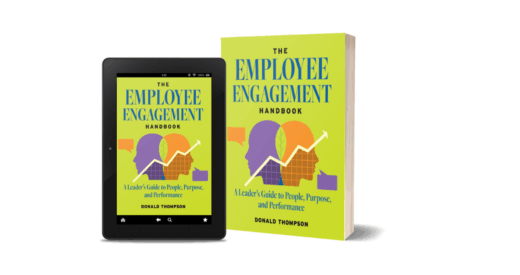The urgent lessons collaboration can teach us about Smart City innovation
People support a world they help create. When cities take the time to involve their citizens and create partnerships between public and private stakeholders, they have more capital to leverage: community capital.
Some of the largest grants, the most innovative projects, and the most successful tech experiments can be mapped to cities that focus on collaboration to leverage their community capital. These are cities that partner with their citizens, bring the public and private sector together, and turn research and tech-trends into projects and testbeds.
So how are they doing it?
What does it look like when Smart City tech trends intersect with a focus on collaboration and community? Check out the patterns of collaboration and community showcased by these three examples:
Barcelona’s Decidim
Barcelona famously gives its citizens a voice in city government decisions through Decidim, an open-source, digital, democratic platform. On Decidim, citizens can voice their opinions about city projects, make recommendations, track proposals, and participate in community-wide debates.
“At a time when cities and societies are increasingly wary about technology’s consequences, Barcelona is carefully leveraging it for the greater good — and setting an example for other cities to follow,” writes Philip Preville in “How Barcelona is leading a new era of digital democracy.”
Citizen proposals on the Decidim platform have impacted everything from mobility and accessibility in Barcelona neighborhoods to sustainable initiatives in the city’s coastal areas. The Decidim software platform is also open-source and is now being leveraged by dozens of other cities around the world.
Boston’s Participatory Chinatown
Boston is a leader in experimenting with inclusive smart initiatives, focusing on what’s called focusing on what’s called “participatory urbanism,” or the use of mobile technology and other communication tools to help community members become active participants and stakeholders in urban planning.
One unique example is the “Participatory Chinatown” video game simulation. Through this simulation, community members participated in the planning and development process for an important historic area in Boston simply by playing a game — choosing a game character, exploring the area through virtual simulation, and trying to accomplish different tasks virtually, like finding a job. “Participatory Chinatown” gave participants a chance to experience the neighborhood before participating in brainstorming sessions with city officials and urban planners.
“With the help of big data and analytics, urban planners can now use simulations to anticipate the impact of urban development programs,” writes Laura Adler in “SimCities: Can City Planning Mistakes Be Avoided Through Data-Driven Simulations.” “Using these tools, cities can become more sustainable and strategic, while the planning processes become ever more inclusive.”
The project has been praised for enabling civic participation among people who typically face language or socioeconomic barriers.
Singapore’s HealthCity Novena
Faced with an aging population, Singapore is using Smart City technologies to raise productivity and meet the needs of older citizens. One project that highlights their collaborative approach to this Smart City goal is “HealthCity Novena” – Singapore’s master plan for community-focused health.
Novena is the medical precinct for the Central region of Singapore, and “HealthCity Novena” outlines cutting-edge, holistic improvements that are slated to be in place within Novena by 2030. “Together, we have developed a healthcare masterplan where buildings that perform complementary functions are sited together to optimise care and interlinked via sky bridges, pedestrian-friendly streets, leafy parks and underground car parks for safe, convenient and good access to care,” writes Madam Kay Kuok, Chairman of Singapore’s National Healthcare Group.
In two ways, this project showcases the potential of Smart City collaboration: First, it shows an obvious emphasis on healthcare as a vital part of every citizens’ quality of life. (Unsurprisingly, the city’s leadership also had a strong response to COVID-19; Singapore was praised by the World Health Organization for its use of technology to address the pandemic, including the development of a COVID-19 tracing app and its use of chatbots to answer COVID-19 related questions). Second, the project showcases a collaboration between infrastructure and healthcare — an example of how the two systems can support one another in smarter city development.
Collaboration in Your Smart City
The conversation about collaboration in Smart City planning is absolutely vital right now. At this moment, officials in your city are planning Smart City projects. Maybe they’re looking at how many homes and businesses have access to broadband, or they’re considering smarter parking meters that alert drivers to open parking spots. Maybe they’re discussing autonomous police stations where citizens can report a crime without talking to a person. Or maybe they’re creating an app that will allow you to access city services online.
Wherever you are right now, there are people nearby planning those projects for you and for the places you call home.
So, get involved! Find out about the Smart City projects that are going on in your city. Follow your city service departments on social media so you know when they’re holding Town Hall meetings and how you can voice your opinions. Find out who your city officials are! Learn about your City Council members, and whether your city has Citizen Action Committees. Some cities even offer Open Data brigades, composed of citizens who want to leverage Smart City data.
Join. Learn what they’re doing. Immerse yourself.
At the end of the day, smart cities have the potential to change our world: to fight climate change, reduce crime, banish poverty, support our elderly citizens, and nurture our children. They offer the chance to have cleaner air, a higher quality of day-to-day life, more inclusive community events, and even less traffic. But, it’s not the technology that’s going to make that happen. It’s the people.
Dr. Sarah Glova (www.sarahglova.com) is a tech consultant and public speaker who researches how Smart City tech trends affect communities across the globe.






